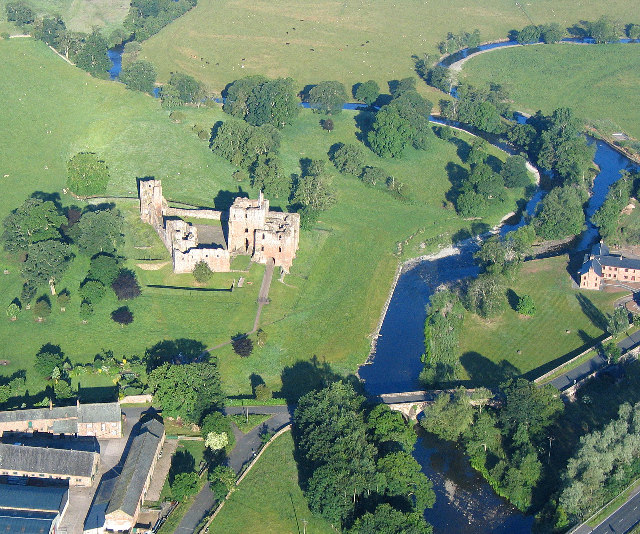Topics > Civil Parishes in Cumbria > Brougham Civil Parish > Brougham Parish, 1848
Brougham Parish, 1848
BROUGHAM (St. Ninian), a parish, in West ward and union, county of Westmorland, 1¾ mile (S.E.) from Penrith; containing 249 inhabitants. This was the Roman station Brovoniacum, which appears to have comprised an area 140 paces in length, and 120 in breadth: the vallum and some vestiges of the outworks are visible; and coins, votive altars, and other relics have been found on the southern side of the station, where it is said a city stood named by the Saxons Burgham, the Castle Town. A castle was built soon after the Conquest, principally, as appears from an inscription over the inner gateway, by the first Roger, Lord Clifford: it was demolished by the Scots, in 1412; and having been rebuilt, was honoured by the presence of James I., who was entertained by its noble owner, Francis, Earl of Cumberland, in August 1617. The castle sustained much damage during the parliamentary war, but was restored by the celebrated Countess of Pembroke, in 1651. The venerable and extensive ruins are pleasingly situated on a woody eminence, at the confluence of two streams; and near them is a handsome pillar, embellished with heraldic bearings, and surmounted by a small obelisk, erected in 1656, by the countess, as a memorial of her last parting with her mother, the Countess Dowager of Cumberland, on the spot, April 2nd, 1616. The parish is bounded on every side, except the south, by the rivers Eden, Eamont, and Lowther, which unite here, and comprises by computation 5,000 acres; the soil, with the exception of about 1,000 acres of red gravelly loam, which is very productive, is in general light, sandy, and sterile. The Lancaster and Carlisle railway passes in the immediate vicinity. Brougham Hall, the property and residence of Lord Brougham and Vaux, late lord high chancellor, is a plain, lofty, and ancient structure, with an embrasured parapet, erected at different periods, and occupying an elevated site, which, from a similarity in the richness and diversity of the prospect it commands, has acquired for the seat the characteristic title of the "Windsor of the North." The living is a rectory, valued in the king's books at £16. 10. 7½.; net income, £290; patron, the Earl of Thanet: the tithes have been commuted for £91. 5. The church stands pleasantly within a curve on the southern bank of the Eamont. In the western part of the parish is a chapel of ease, supposed to be dedicated to St. Wilfrid, which, together with the church, was rebuilt in 1659, by the Countess of Pembroke.
Extract from: A Topographical Dictionary of England comprising the several counties, cities, boroughs, corporate and market towns, parishes, and townships..... 7th Edition, by Samuel Lewis, London, 1848.

Co-Curate Page
Brougham
- Overview About Brougham Map Street View Brougham is a dispersed hamlet, located just over a mile south-east of Penrith Cumbria. There are are a number of farms in the area …



